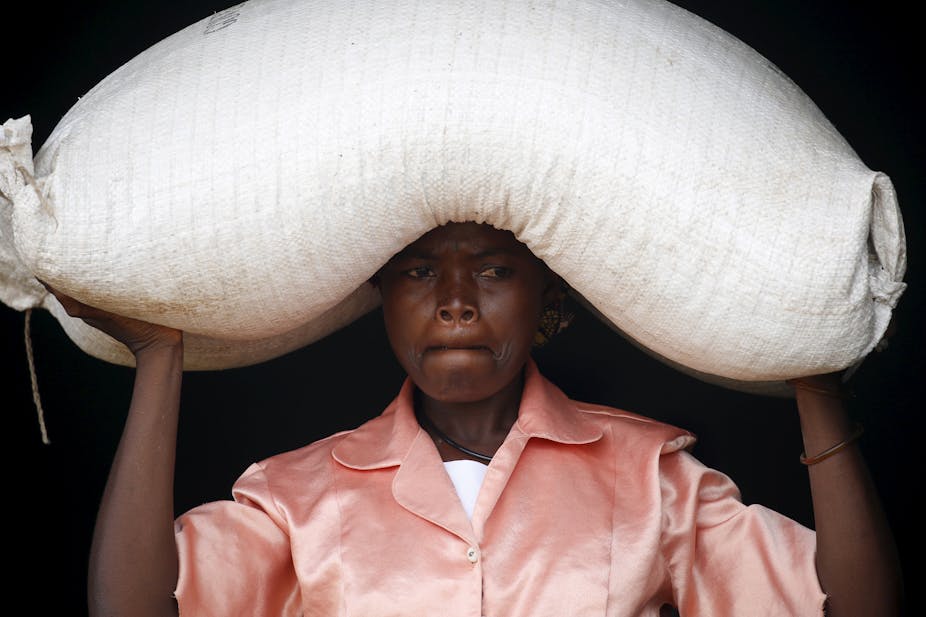Adequate nutrition is still a massive global problem despite research showing that it contributes significantly to both the economic and health benefits of a country. In Africa an estimated 220 million people are undernourished. As researchers, policy makers and activists from public health, nutrition, food systems and dietetics head to South Africa to attend the second World Nutrition Congress, Professor David Sanders explains why the poor state of nutrition should be viewed with the same urgency as HIV/AIDS was 15 years ago.
Why is nutrition still an important issue?
A person’s nutritional status significantly influences their health. Nearly 50% of child deaths globally – about 3 million children – can be linked to undernutrition which is a result of low birth weight, protein-energy deficiency and deficiencies of vitamins and minerals.
At the same time there are an estimated 2.3 billion obese or overweight adults across the world. They are most at risk of developing diabetes, heart disease and certain cancers. These diseases are the leading causes of premature death.
And according to the World Health Organisation’s 2016 Global Diabetes Report diabetes cases in low and middle income countries are rising at a faster rate than in developed countries.
To change these statistics and improve global health outcomes, nutrition needs a significant focus. Nutritional problems need to be seen to be as critical as HIV/AIDS was seen to be 15 years ago. A broad social movement for improved food and nutrition is urgently needed.
What are the two biggest concerns around nutrition in the developing world?
When women in low and middle-income countries suffer from undernutrition, their health, productivity and pregnancy outcomes are affected. Most newborn deaths are related to low birth weight, which is often a result of maternal undernutrition.
Undernutrition affects up to 50% of all children in some African and Asian countries. In South Africa 25% of the country’s children suffer from undernutrition. This increases their risk of dying as well as of contracting infectious diseases. It also affects their physical and intellectual development and, later in life, their economic productivity.
A large number of low and middle income countries now experience a “double burden” of malnutrition – when different members of the same family may suffer from undernutrition and obesity. Obesity and the problem of being overweight are becoming more common as a result of urbanisation.
How have nutrition challenges changed in the last 20 years, particularly in Africa?
Many countries in Africa now have both “kinds” of malnutrition: undernutrition and overweight and obese people.
Although the rates of undernutrition have fallen in most countries, they remain far too high. At the same time the number of overweight and obese people has risen. Both types of malnutrition are related primarily to diets that are inadequate. This is both in terms of the overall amount of food, and, in an increasing number of countries in terms of protein, vitamin and mineral intakes.
This fairly recent change in diets is largely because of increased access to low-nutrient, processed and fast foods. These are often cheaper, easy to prepare and aggressively marketed.
Other important factors include an increase in sedentary behaviour and, in the case of undernutrition, the erosion of breastfeeding. This is coupled with frequent childhood diarrhoea due to unsanitary environments and poor hygiene.
From a food systems perspective, there are several other fundamental changes that have contributed to this dietary transition. These include:
the continuing displacement of small farmers by large agribusiness,
the rapid growth and penetration of food transnationals into low and middle income countries, and the spread of their products through liberalised and de-regulated trade, and
the mushrooming of supermarkets.
What is the best way to tackle nutrition challenges. Do developing countries need to take a different approach?
There are a number of elements that must be addressed to tackle the challenges.
Firstly, the energetic promotion of breastfeeding. This should include supportive legislation to set, for example, standardised maternity leave and breastfeeding time and facilities at workplaces. There also need to be tighter controls on the marketing of infant formula.
Increased regulation of the food environment is also necessary. This could include restrictions on the advertising of unhealthy foods and snacks and taxing sugary drinks.
In addition, governments should consider subsidising healthy foods such as milk and supporting small-scale agricultural producers. These producers could be aided by policies that encourage their involvement by, for example, sourcing their products for state-funded programmes such as school nutrition schemes.
And finally, to back up these policies the public needs to be made more aware of the effects of poor nutrition and its causes so that people can demand greater regulation of the food environment.

